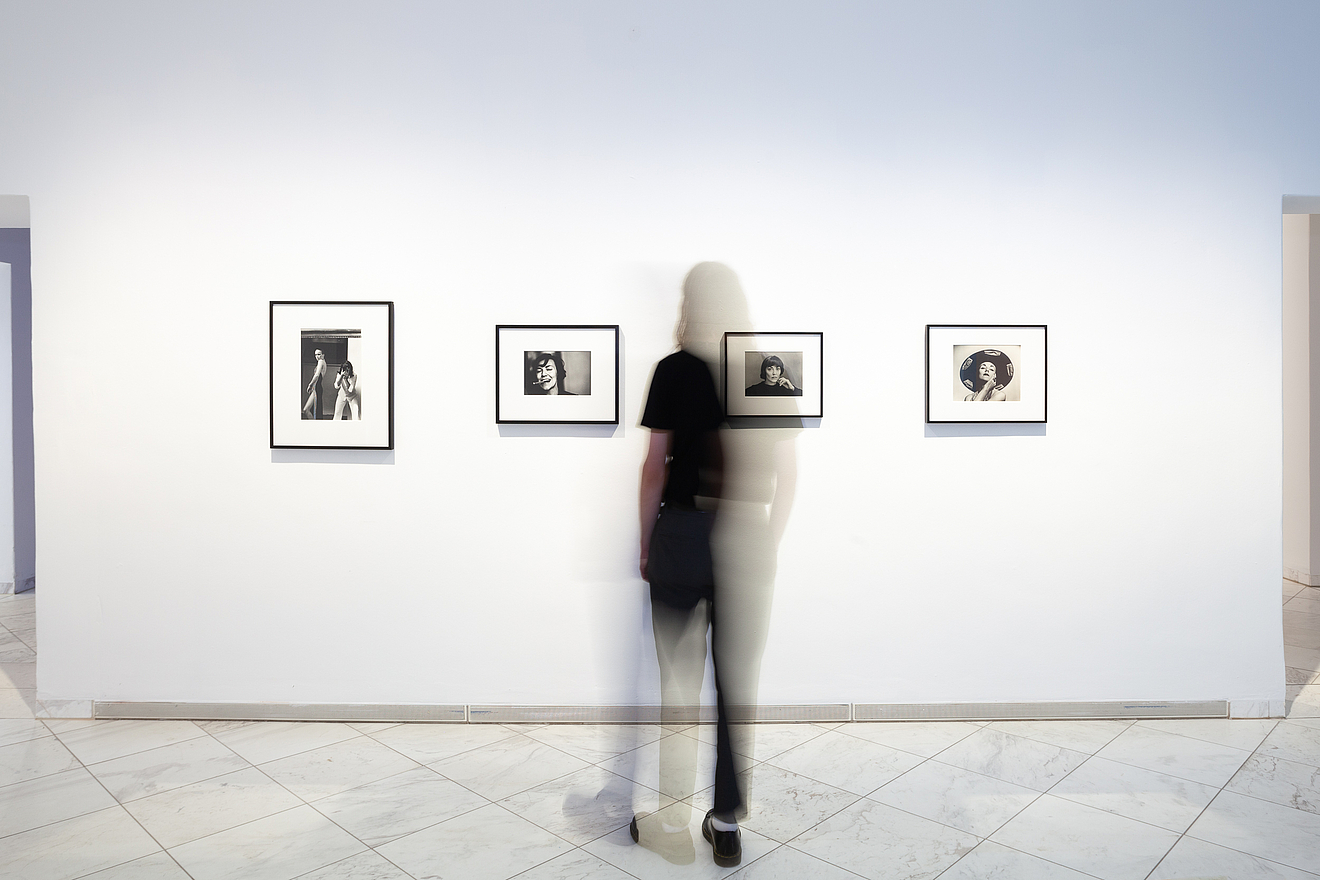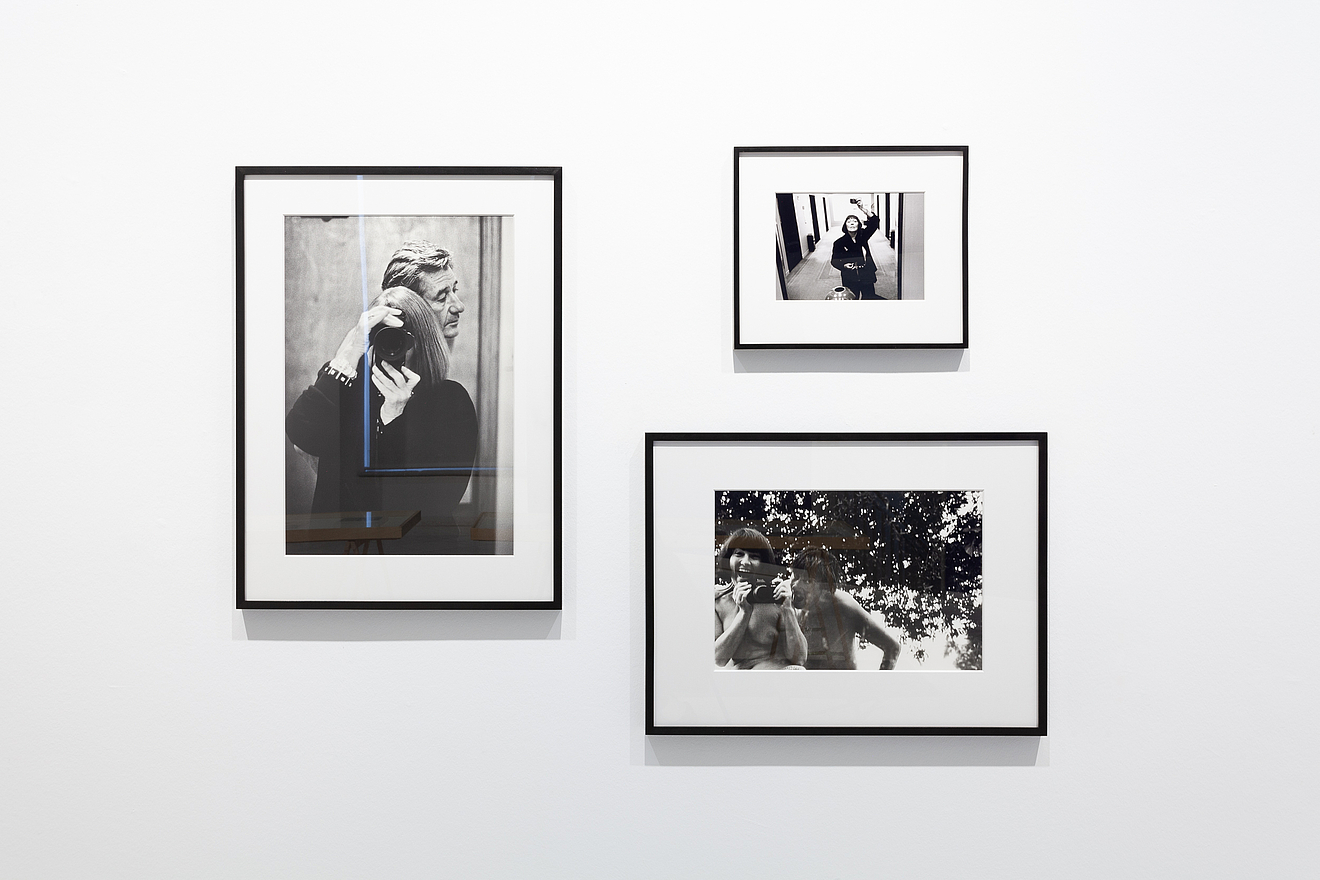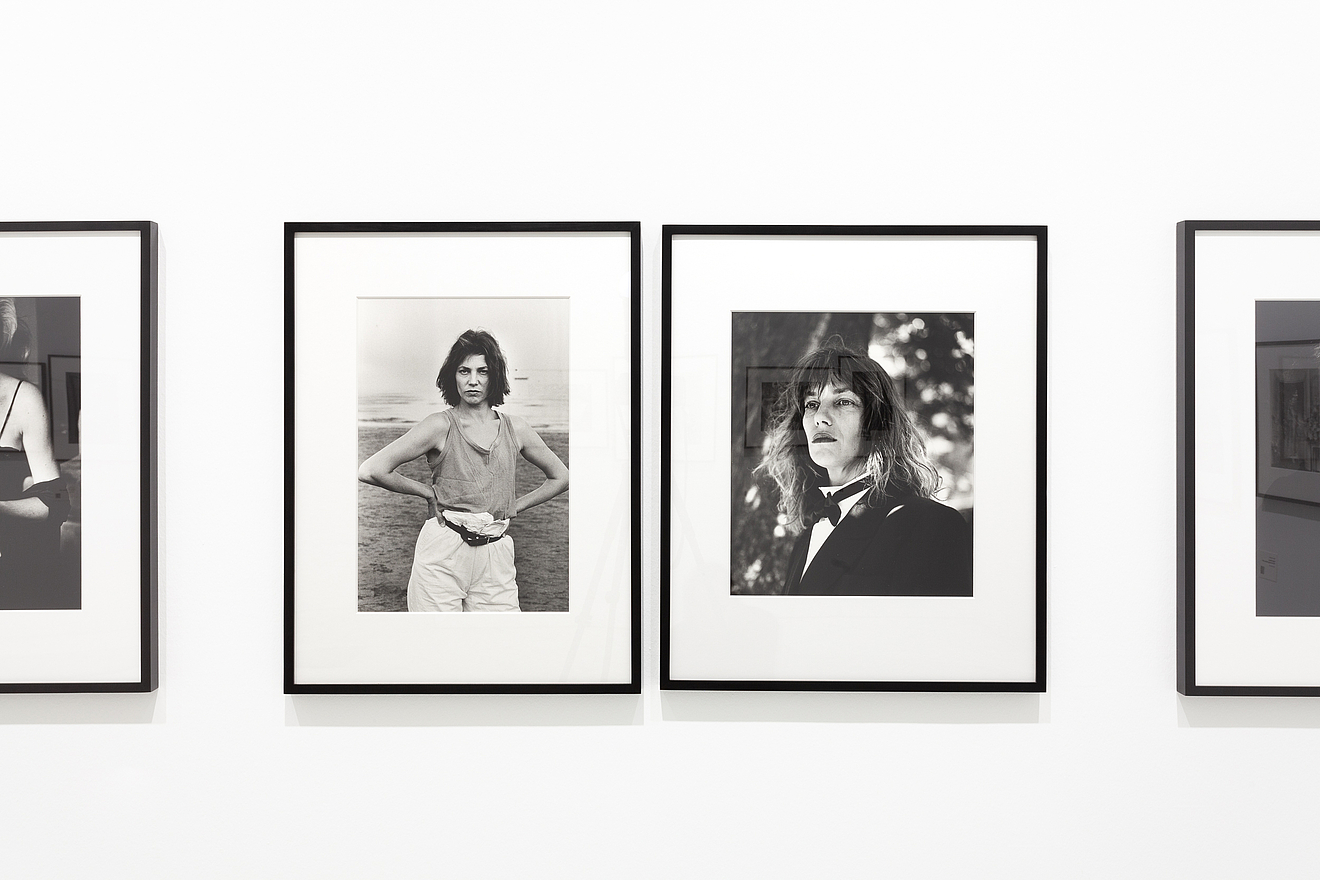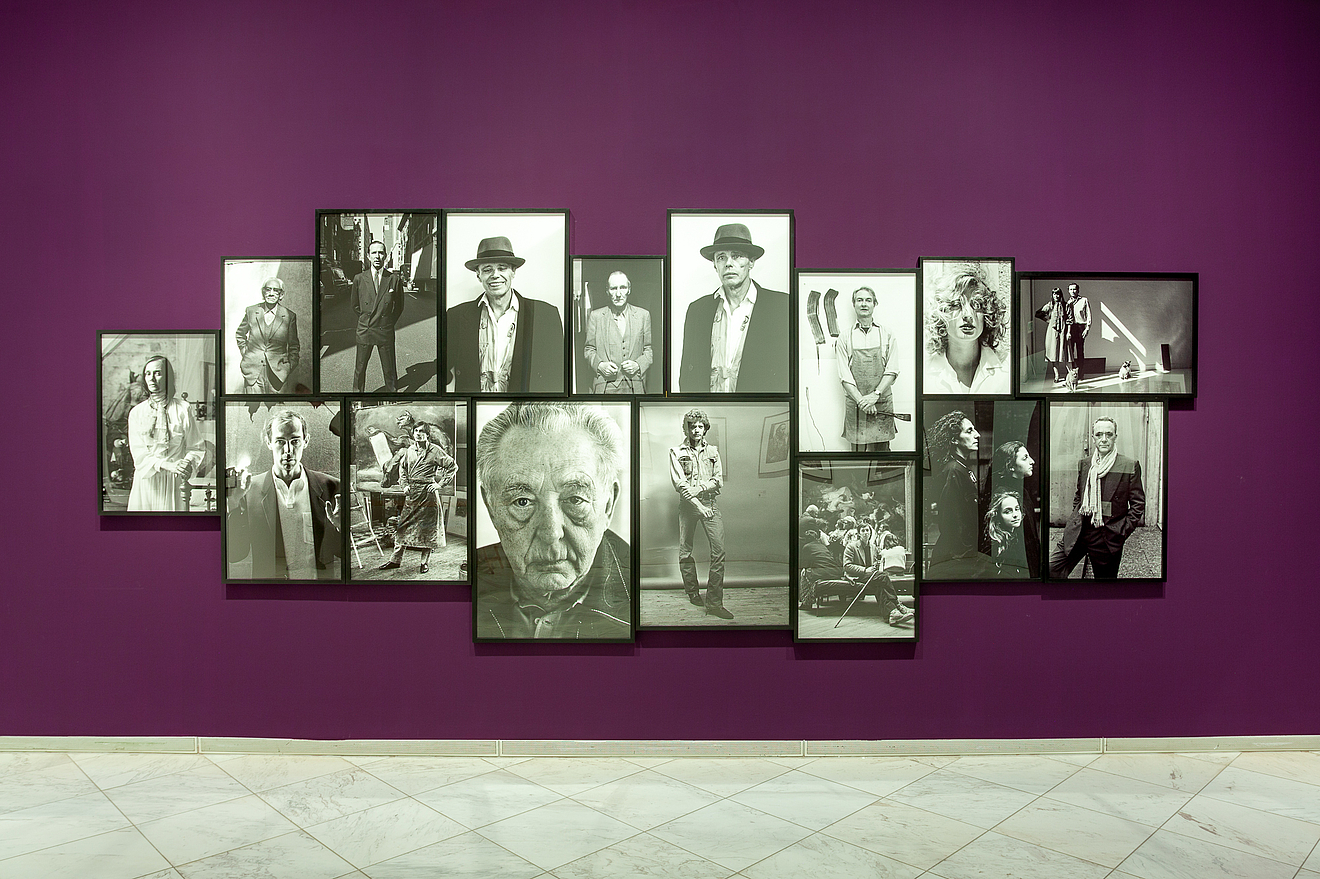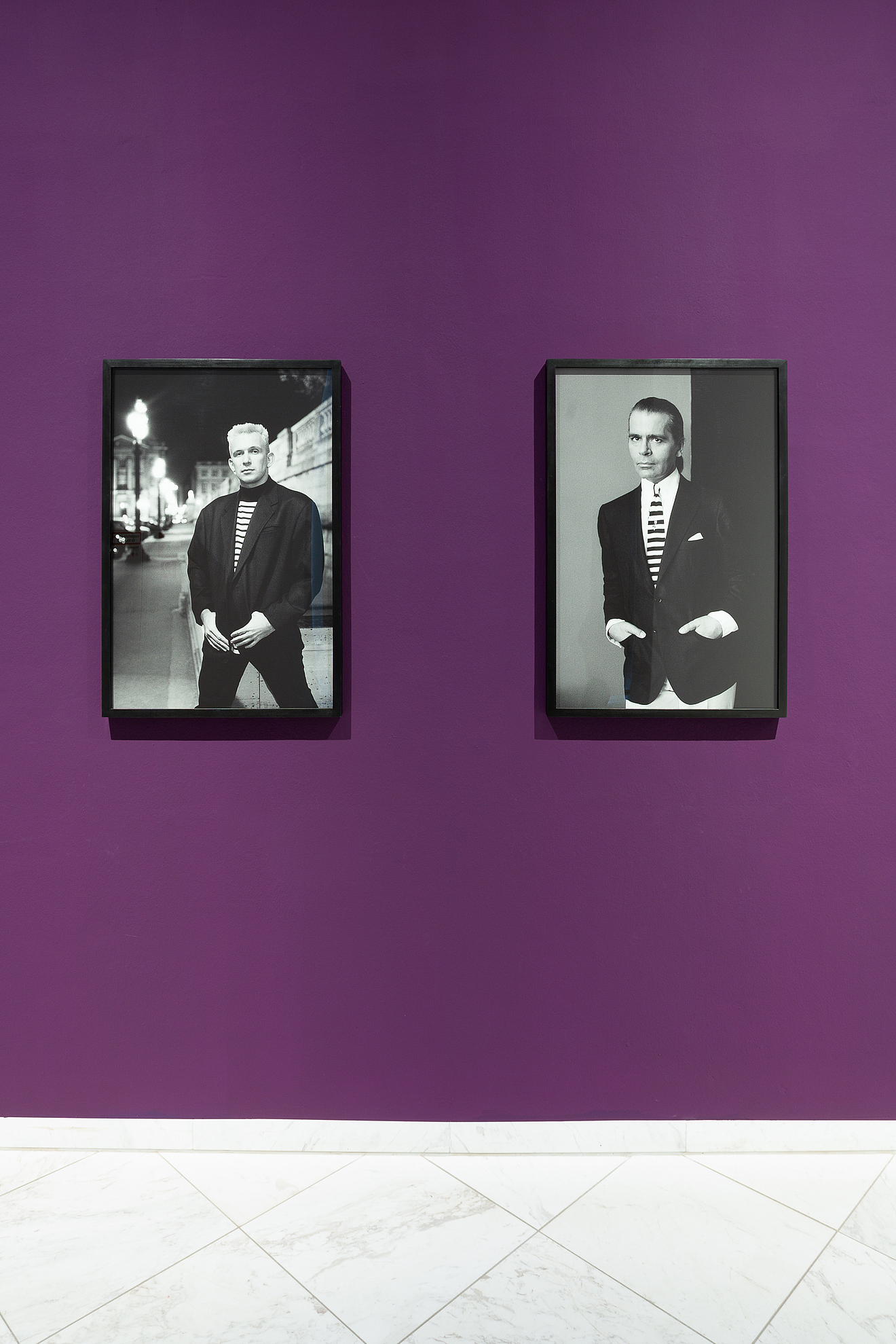Alice Springs. Retrospective
Like her husband, Alice Springs has worked in three genres: Portraiture, nudes, and fashion or advertising photography, but with different accentuations. Above all, her incomparable portraits still resonate today with great authenticity and intensity. On the occasion of June Newton‘s 100th birthday, over 150 photographs are shown in this new retrospective, along with a number of photographs by Helmut Newton from Us and Them.
Extensive research in the archives of the Helmut Newton Foundation and in particular the entire collection from the Newtons‘ flat in Monaco, which was only recently moved to Berlin, has also provided a new insight into the work of Alice Springs. The surprising results will now be on Display for the first time as vintage, late or Exhibition prints and shown along the iconic Portraits that Alice Springs left behind.
The exhibition at Museum Schloss Moyland takes the opportunity of this retrospective, organised in cooperation with the Helmut Newton Foundation and the Opelvillen Rüsselsheim, to present a small selection of photographs by Willy Maywald, a photographer from Kleve who became famous in Paris, corresponding to the artist Portraits by Alice Springs.
Many names – one photographer
Since 1970, June Newton worked professionally as a photographer under the pseudonym Alice Springs, especially in the field of portraiture. But even before that, she took up the camera in a private context. Born June Browne in Melbourne in 1923, she trained as an actress. Numerous engagements and awards followed under the stage name June Brunell.
The actress June Brunell
The artistic career of June Newton, born June Browne, began in Australia as an award-winning actress under the pseudonym June Brunell. An early colour portrait by Helmut Newton expressively captures his wife in the role of Salome in 1951. Whether hat model, Salome or Joan of Arc — in this room we encounter June Newton and her ability to transform herself into different characters. She discovered the principle of role-playing for herself at an early stage. It pervades the entire portrait work of Helmut Newton and Alice Springs and became a compositional drive for both of them.
The story behind the pseudonym Alice Springs
Alice Springs received her first fashion commission from Dépêche Mode magazine. After her breakthrough as a photographer, June Newton published her photographs under the pseudonym Alice Springs. She explains her choice of pseudonym in her autobiography with a humorous anecdote: During a dinner with friends, Helmut Newton had asked her what name she intended to use when she published her photographs in the next magazines. When the conversation came to a standstill, a friend of the couple quickly opened the Australian map in the atlas, asked for a pin and asked June Newton to aim with her eyes closed. The pin landed in the centre of the continent in the small town of Alice Springs: “That’s your name!” exclaimed the friend.
Early years
June Newton’s early work, before she began photographing in 1970 and somewhat later adopted the pseudonym Alice Springs, was created in close dialogue with Helmut Newton: primarily as mutual portraits, taken in Melbourne in the 1940s and 1950s and in Paris and Ramatuelle in the 1960s. Some of these sometimes intimate images are also part of the joint exhibition and book project Us and Them, which was realised decades later in 1998/99. Other photographs remained unknown and unpublished until this retrospective, which opens up an even wider view into the private lives of the photographer couple.
Portraits and self-portraits
Alice Springs’ self portraits and the portraits of Helmut Newton occupy a kind of special position in the retrospective. They were often taken during summer holidays in Ramatuelle in the south of France, in her flat in Paris, in hotels in New York or during Helmut Newton’s shoots in other locations.
Us and Them
There has never been anything comparable to Us and Them, from which many self-portraits and mutual portraits originate, before or since. Us and Them is much more than a joint exhibition and book project. It is a kind of photographic diary that records Helmut and June Newton's life together in photographs of each other. It also includes photographs that June and Helmut Newton took independently of each other of actors, artists and other prominent people from the contemporary cultural jet set.
In the exhibition, the portraits taken at different sessions are now presented side by side as image pairs, revealing two facets of the same personality. The view of June Newton, alias Alice Springs, appears more private and intimate than that of her husband, who staged the portraits like a choreographer with skilful lighting and selected accessories.
Many of the earlier portraits were taken in Paris. After 1982, when Helmut and June Newton regularly travelled to Los Angeles to spend the winter months at the Chateau Marmont Hotel, numerous portraits were taken in and around Hollywood for magazines such as Égoïste, Vanity Fair and New Yorker.
The photographer Alice Springs
The oeuvre of June Newton, alias Alice Springs, began when Helmut Newton caught the flu. June had her husband explain to her how to use the camera and light meter and photographed an advertising image for the French cigarette brand Gitanes on Place Vendôme in Paris in 1970. The portrait of the smoking model was the starting point for the trained theatre actress’s new career. In the following years, José Alvarez, who ran an advertising agency in Paris at the time, arranged commissions for photographs of pharmaceutical products. One major campaign from the 1970s became particularly well known: Advertising images for the legendary Parisian hairdresser Jean-Louis David, which were published for years as fullpage adverts in numerous magazines.
Publications in Égoïste, Marie Claire, Elle, Stern, Vanity Fair
From 1977, Alice Springs regularly published her portraits in the large-format French magazine Égoïste , some of which made it onto the cover. The magazines Elle, Stern, Vanity Fair and Marie Claire also booked Alice Springs for portrait sessions. However, many of these photographs have remained relatively unknown until now and a photo from her last advertising campaign for a ladies‘ razor is also being shown for the first time in this retrospective. Here, a young woman in a pink dress stands in front of a motorbike, taken in Los Angeles in 2004, possibly in the film studios of Hollywood film studios. It was actually a commission for Helmut Newton, who had died just a few days earlier and whom Alice Springs replaced. So her photographic work began with a commission from her husband — and that‘s how it ended, because no more relevant photographs were taken after that.
June Newton, alias Alice Springs, made no distinction between social classes, even though most of the people she portrayed belonged to the cultural jet set. Time and again, she succeeded in adding a new and unusual image to the generally accepted and well-known image of celebrities that was as cliché-free as possible. It is possible that her in-depth knowledge of acting helped her to look both at and behind the facade of human expression when taking photographs.
This is especially true in those areas where illusionistic representation is played with, such as the film business, as we can see here. In her autobiography, June Newton writes that her husband Helmut advised her to concentrate on portraits because he felt that her images of people were stronger than her fashion shots. According to June Newton’s memory, she initially worked in the studio with natural light, which she could regulate with apertures and reflectors, and in front of a grey background wall. Later, she learnt to adapt herself and her camera view to the respective lighting situations so that she could also take photos in hotel rooms or flats. Whether in the studio or outside, with natural or artificial light - she always focussed her attention on the most natural expression possible and on the eyes of her subjects.
The former actress becomes particularly recognisable in the photographer Alice Springs when she allows the people she photographs to play themselves or be themselves. The faces — with open, questioning, smiling or understanding looks — ultimately seem to be interested in us as we look at them, decades after the actual photograph was taken.
Artists
Alice Springs and her husband had access to the international art world of their time, even if photography was not recognised as having artistic status for a long time. Springs photographed artists, writers, gallery owners and architects directly and quickly, usually in private settings.
In 1982, the photographer also photographed Joseph Beuys as part of his exhibition opening with the publishing couple Liliane and Michel Durand-Dessert in Paris. The couple is shown here in a private setting with three cats. Of Beuys she took one of the few photographs in which the artist laughs heartily. The philosopher and author Michel Foucault also laughed into the camera for Alice Springs; the picture was taken in Paris in 1982 for Vanity Fair.
Alice Springs and Helmut Newton had a close friendship with some of the people portrayed. For example, their companion José Alvarez, who is also portrayed, wrote a biography about the couple and emphasised their individual artistic achievements. The Newtons were also closely associated with the famous fashion photographer Sheila Metzner.
Nude
Helmut Newton and Alice Springs photographed both men and women in the nude; the differences are obvious: Helmut also primarily staged in this genre, similar to his fashion and portrait photography. Alice Springs, on the other hand, photographed her subjects more casually and always very naturally, as if in passing.
The nude models were usually the same, such as Sirpa Lane, Pat Cleveland or Susi Wyss. However, Alice Springs did not work on behalf of Playboy or a similar magazine, as her husband did, but initially for herself. At the end of the 1970s, however, some of these nudes also appeared in the French magazine PHOTO or in 1985 on the cover of the extensive exhibition catalogue Das Aktfoto.
Fashion
José Alvarez arranged numerous commissions for June Newton, alias Alice Springs, in the 1970s. In 1983, he, now head of Éditions du Regard , published her first book of portraits, because from the mid-1970s onwards numerous portrait commissions had been added to the product photography: Sometimes iconic shots, images of people full of empathy.
In her personality portraits, Alice Springs succeeded not only in capturing the appearance of her subjects, but also their aura. They convey a fascinating mixture of empathy and curiosity that makes Alice Springs‘ work so interesting to this day. The wordless dialogue that led to these extraordinary portraits seemed to be based on a kind of affinity.
She mainly focussed her gaze on people‘s faces, often capturing them in a tight framing as a bust or three-quarter portrait without additional accessories. There are only a few studio portraits among them, the majority were taken — usually in natural light — in public spaces or in the homes of the people portrayed. In her portraits, which were taken quickly, spontaneously and with simple camera technology, we encounter alternately vain poses or a natural self-confidence, an open or shy facial expression. The photographs thus become visual commentaries, interpretations of the subjects. Nevertheless, the photographer was never interested in exposing the respective person and although Alice Springs approached the subjects more closely and reacted more spontaneously to surprising situations than some of her colleagues, she allowed them to retain their individuality.




